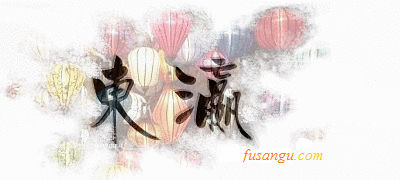If you are interested in the fascinating culture of Ancient China you should not miss out on a visit to Xi’An. Formerly known as Chang’An (“Eternal Peace”), Xi’An was the capital of the empire during one of the most magnificent eras of the Chinese civilization.
Though little remains of the ordinary architecture, Xi’An still retains a few vestiges of the past and preserves important historic temples.
During a 2-day visit it is possible to see many of Xi’An main historical sites. In this page we describe a classic itinerary.
First visit to Xi’An
To make the most of the little time available, we suggest you begin your visit from the main cultural sites. A good choice could be starting from the ancient pagodas.
Day 1: Xi’An, ancient temples, city centre
During the Tang Dynasty Period Xi’An (西安), then known with the name of Chang’An (长安 | Eternal Peace) was the capital of a unified Chinese nation. With a history of more than 3.000 years it is known as one of the Four Great Capitals of China.
The magnificent city became a model also for the neighbouring nations. Korean Silla capital, Gyeongju, and Japan’s ancient capitals, Nara and Kyoto were built by drawing inspiration on the layout and majestic architecture of Chang’An.
Though not much remains today of its glorious past, you can see feel a sense of history and visit a number of historical sites that display the scale and importance of the ancient city.
Located in central China, Xi’An grew into an important trade centre and and the eastern end of the Silk Road. The city still serves as gateway to Western China and Central Asia.
Giant Wild Goose Pagoda
One of China’s most important temples, the Giant Wild Goose Pagoda (大雁塔, DaYanTa) had a fundamental role in the diffusion of Buddhism throughout China.
The beautiful ancient pagoda is part of the DaCi’En Temple (大慈恩寺, DaCiEnSi), which comprises a few halls, a bell tower, a drum tower and a spacious garden. It was built during the reign of Emperor GaoZhong of the Tang Dynasty.
It served as a temple and major collection centre of Buddhist scriptures. These along with Buddha images and relics were brought from India to China by the monk XuanZang. His incredible seventeen-year long journey through modern-day India, Nepal, Bangladesh, Pakistan became the theme of a renowned classic novel, the “Journey to the West” (西游记).
The impressive task of translating the sutras from Sanskrit into Chinese was supervised by XuanZang, who became a crucial figure in China and all East Asia.
The seven-storey pagoda has a simple and dignified appearance. Inside are an ancient statues and stelae made by noted artists. The engraved statues were made by Yan LiBen.
The pagoda is located at around 5 km from the city centre. It can be reached by metro and a 15-minute walk or by taxi.
You can also reach the pagoda by bus. There are many lines serving the area (the staff at your hotel can give indications and write the name of the destination on a piece of paper in Chinese characters).
Small Wild Goose Pagoda
The Small Wild Goose Pagoda (小雁塔, XiaoYanTa) is part of the ancient DaJianFu Temple (大荐福寺, JianFuSi), another masterpiece of Tang China’s religious architecture.
As in the case of the Giant Wild Goose Pagoda, the structure of the pagoda has a square base. Only 13 of the original 15 stories survive. The dimensions of the sections decrease progressively with elevation, giving the ensemble a very delicate appearance.
The pagoda can be reached on foot in less than 10 minutes from NanShaoMen Station (Line 2). The area is also served by some bus lines.
City centre
The city centre is a rather compact area where you can have a pleasant stroll. At the central square is the city’s most iconic landmark, the Bell Tower of Xi’An (钟楼, ZhongLou).
Marking the geographical centre of the city, where the north-south and east-west main avenues meet, the tower is an elegant two-storey architecture dating back to the Ming Dynasty Period.
North-west of the Bell Tower is another masterpiece of Ming China, the imposing Drum Tower of Xi’An (鼓楼, GuLou). Both buildings feature delicate decorations and vivid colours, which become particularly beautiful at night when they are lit.
Next to the Drum Tower is the Muslim Quarter (回民街, HuiMinJie), one of the few areas where the city retains ancient vernacular architecture. The place is very popular among tourists because there is plenty of small restaurants and stalls which offers a wide choice of food, especially noodles and sweets. Xi’An is one of China’s gastronomical capitals and here you will quickly understand why. This is a good place to wrap up your first day in Xi’An.
Day 2: Xi’An great archaeological site
The second day in Xi’An offers images of the city’s imperial grandeur. The morning is devoted to a visit to the Terracotta Warriors Archaeological Site while the remaining time is spent for a visit to the DaMing Palace Archaeological Site.
Terracotta Warriors Archaeological Site
The Terracotta Army (兵马俑, BingMaYong) is a vast collection of impressive life-sized terracotta statues that portray an army tasked with protecting Qin Shi Huang (秦始皇), the emperor who unified the nation for the first time.
The army is part of a huge necropolis, much of which has not been explored out of deference and preservation concerns.
A roofed building covers a large section of the main pit (number 1) where visitors can see long formations of over 6.000 figures of soldiers. Other partially excavated sections provide insight into the archaeological practice. These include figures of cavalry and infantry units.
The Imperial Tomb, located at the foot of Mount Li, has escaped plundering and remains sealed as there are concerns that violating it might damage its artefacts, which are supposed to be unique in quantity and artistic and historical importance. According to historical accounts the construction of the mausoleum required an enormous amount of treasure and labour.
The sculptures, depicting soldiers, horses, chariots and generals, include a large quantity of details and some were painted, though colours have faded upon exposure to open air.
The site is best visited by joining a guided tour. You can also reach the site by bus. Buses leave regularly from the square south of Xi’An Railway Station.
DaMing Palace Archaeological Site
The DaMing Palace (大明宫, DaMingGong) was an enormous imperial residence of the Tang Dynasty Period. In the eyes of a westerner its grandiose architecture, impressive for its beauty and massive scale, can only be matched by the works of art by Imperial Rome.
Hardly any vestiges survive but a large reconstructed building, the DanFeng Gate (丹凤门, DanFengMen) at the southern end of the area, and the platforms of the main halls offer eloquent sights of the former glory of the site.
The former gardens have been recreated. They include a number of plants of particular ornamental value.
Beneath the DanFeng Gate an interesting museum and the original foundations of the structure can be visited.
A few models on display give a general idea of the former magnificence of the site. A interesting 3-D virtual reconstruction can be admired at the National Museum of China in Beijing.
Day 3: excursion to HuaShan
A third day may be devoted to a visit to HuaShan, a magnificent mountain rich in scenic sites and ancient temples.
Related articles:
China suggested 2-week itinerary
Other destinations:
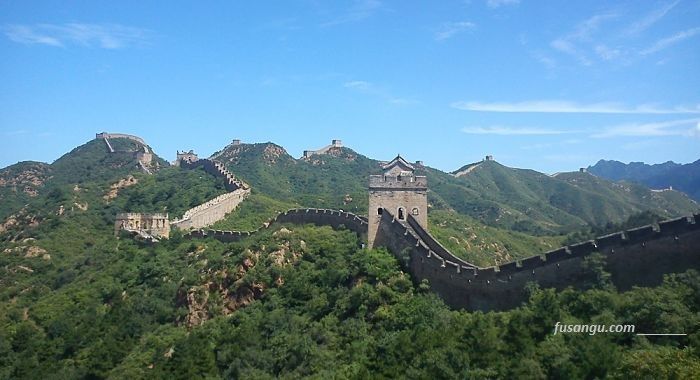
Many of the most popular sections of the Great Wall can easily be reached from Beijing. The various sections of the wall differ in a wide range of aspects.
If you choose to visit the Great Wall with a one-day excursion your choices will have to take into account practical considerations. Some sections can be reached by bus or train while for others it is advisable to resort to the support of travel agencies.
Great Wall of China
The second day in Beijing is dedicated to a visit to the Great Wall of China (万里长城, WanLiChangCheng). Depending on which section you choose to visit, different programmes are possible.
As it is recommended to visit the Great Wall by taking part in a guided tour, your choice will somewhat depend on the general programme offered.
Excursions to the Great Wall from Beijing
These are the main section that you can easily visit on a day-excursion from Beijing:
-
BaDaLing (八达岭), the closest and most visited section of the Great Wall, located within the borders of Beijing Municipality. It was built during the Ming Dynasty Period. It features imposing, wide walls with large fortification works and watch towers. Winding up along the ridges of a rugged mountain landscape, it is a beautiful sight. While very impressive, it is not the best choice for those who seek to satisfy their fascination with ruins. Over-crowding is also a major drawback in this choice. Nearby the Great Wall Museum provides detailed information on the history, function and construction of the wall. BaDaLing can be reached by bus and train. A very convenient option is offered by a high-speed train service from Beijing North Station (北京北站, BeiJingBeiZhan) that takes around 35 minutes at a cost of 30 yuan. Another advantage for those with little mobility is the lack of steep paths and the presence of a cable car and other services;
-
MuTianYu (慕田峪), a beautiful section of the Great Wall located in the Municipality of Beijing, first built during the Northern Qi Dynasty and rebuilt during the Ming Dynasty. The natural landscape of the area, dominated by forests, is very beautiful and the architecture of the section, which comprise numerous watchtowers in different configuration and style, is very elegant. Restoration works here have been more discreet and respectful of the material reality. This section offers a perfect balance between beauty of the context, authenticity of the architecture, easiness in reaching and visiting the site. A landmark not to be missed is the ZhengGuan Terrace (正关台, ZhengGuanTai), a rare defensive structure resulting from the combination of three watchtowers. From the point of access you can reach it by hiking or by chairlift and a fun toboggan track can be used for the descent. MuTianYu is popular but usually not too crowded. Independent travelling by bus is possible. A special bus line leaves from DongZhiMen Station, a main subway station in the centre of Beijing. The journey lasts less than 2 hours and costs 30 yuan;
-
SiMaTai (司马台), a beautiful section where restoration works have been limited to consolidation. Consequently the wall here is often in a state of ruin, which makes the scenery particularly fascinating. The work is built through a dramatically changing terrain and features an interesting variety of configurations and technical solutions. Watchtowers exhibit different styles. The Simatai section is close to GuBei (古北水镇), a quaint ancient water town that be reached by bus from DongZhiMen Station in Beijing in around 2 hours at a price of 50 yuan.
There are many other sections but these are the most popular and most tour operators include them in their programmes.
Again, when making a choice you should consider the overall programme. In some cases visits to the Great Wall are coupled to other visits. Typical pairings are the following:
-
1) BaDaLing and Ming Tombs;
-
2) SiMaLian and GuBei water town.
Related articles:
China suggested 2-week itinerary
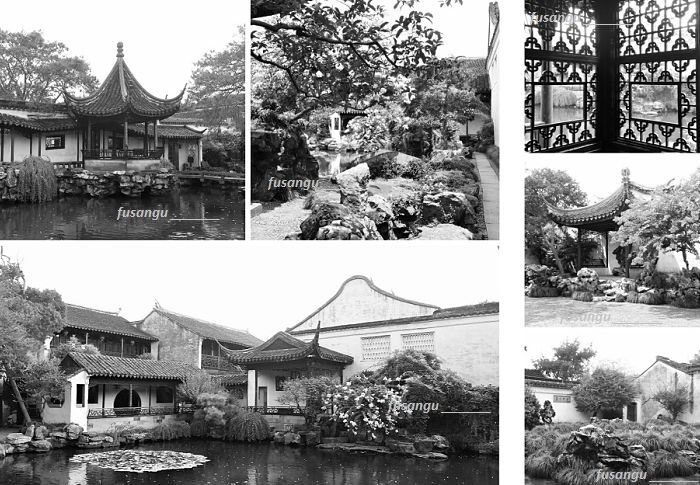
Many people visit Suzhou with a one-day excursion from Shanghai or Hangzhou. A much better choice is to spend at least one night in the city.
Suzhou is rich in cultural heritage and its sites, especially the Classic Gardens, require plenty of time and sufficient freedom in arranging and adapting the schedule.
In this page we present what we deem to be the best Suzhou two-day visit programme.
Practical information is also given so as to help make arrangements easy and avoid any waste of time.
Suzhou: 2-day programme
In general two days are insufficient for a visit to Suzhou. Devoting to the city two days is nevertheless a reasonable choice for the first journey to China (especially if the duration is inferior to 3 weeks).
The itinerary described hereafter is focused on the main cultural sites, especially the Classical Gardens.
Classical Gardens of Suzhou
Suzhou is home to some of the most beautiful and significant traditional gardens of China. Nine of them, each of which would be sufficient of a reason to plan a visit to the city, are named the Classical Garden of Suzhou.
Along with the great museums in Beijing, Shanghai and Xi’An, these magnificent works of art offer a vivid representation of the beauty and greatness of Ancient China.
While their exceptional beauty is self-evident and even a simple stroll in the garden makes for a wonderful experience and a radically different perception of the reality of time and space, a great deal of knowledge is required to appreciated the meanings and the significance of these artefacts.
Day 1: Classical Gardens, Museum of Suzhou, PingJiangLu
Assuming that you choose to wake up early and begin your visit by 8:00 a.m. we suggest you include in your itinerary the Museum of Suzhou, the Humble Administrator’s Garden, the Lion Grove Garden, the Master of the Nets’ Garden, the Lingering Garden, the Tiger Hill.
Master of the Nets Garden
The Master of the Nets Garden (网师园, WangShiYuan) is the smallest among the Classical Gardens of Suzhou. It dates back to the Southern Song Dynasty Period. It is an excellent place where you can start to learn how to appreciate this form of art.
The composition is built around a central pond, surrounded by pavilions and corridors. The observer follows a circular path that opens to a rapidly changing horizons.
It is incredible what the meticulous design achieved in such a small area. Next to the central section around the pond, are the residential quarters. Here you can see many halls exquisitely ornate. Not to be missed is also the small courtyard DianChunYi (殿春簃), a real gem. There is a deep sense of harmony between architecture and Nature;
Museum of Suzhou
The Suzhou Museum boasts a large collection of ancient art which comprises works of painting, calligraphy, porcelain.
Of particular interest (especially in the context of this itinerary) are the relics of the Wu Pagodas (Ruiguang Pagoda and Yunyan Pagoda).
The museum is set in modern buildings which echo the shapes and colors of the traditional architecture of the ancient city.
Humble Administrator’s Garden
The Humble Administrator’s Garden (拙政园, ZhuoZhengYuan) is the largest and most renowned garden in Suzhou.
Dating back to the Ming Dynasty Period, it was founded by a civil servant who chose to retire from his duties to embrace seclusion and a simple and modest life.
The garden area, centred around a large lake, is divided in three parts (eastern, central and western) and comprises a large number of scenes as well as a museum which occupies the former residence. The number of elements (buildings, bridges, stelae, penjing) in the composition is impressive.
Eastern precinct
The eastern section is quite unique as it is formed by a large space of a scale not usually seen is in this kind of gardens. Lawns, small hills, pine groves and a large pond make for a peaceful environment echoing the serenity of the countryside.
Much of this can be contemplated from the Snow and Orchid Hall (兰雪堂, LanXueTang), where you also find a map of the whole garden. Not to be missed are also the Heavenly Spring Pavilion (天泉亭, TianQuanTing) and the terrace next to the large lake full of lotuses, the Lotus Pavilion (芙蓉榭, FuRongXie).
Central precinct
The central section is very dense. Numerous scenes are set around the the pond in the centre. Three islands are said to be an allusion to Mount PengLai’s heavenly land.
The main architecture of this section is the Hall of Distant Fragrance (远香堂, YuanXiangTang), an elegant villa named after the nearby lotus pool. This can be seen through the large and exquisitely decorated windows of the building. A terrace allows you wide views over the pond and the islands, adorned by graceful pavilions. South of the villa is a small pond with rockery and a bamboo grove.
You can enjoy lingering on the Small Flying Rainbow Bridge (小飞虹桥, XiaoFeiHongQiao), designed by a famous artist of Ming China, and continuously change your perspective.
Western precint
The western part is characterised by a large number of buildings. Though the landscape is very dense, it remarkably keeps a balance and creates a very intimate atmosphere.
The main building is divided into two halls, the Eighteen Camellias Hall (十八曼陀罗花馆, ShiBaManTuoLuoGuan) and the Thirty-six Pairs of Mandarin Ducks Hall (三十六鸳鸯馆, SanShiLiuYuanYangGuan).
At the western end of the area is a large open space where you can admire an outstanding collection of bonsai and penjing (“landscape in a vase”), compositions of plants and rocks arranged in artistic vases.
Lion Grove Garden
The Lion Grove Garden (狮子林园, ShiZiLinYuan) dates back to the Yuan Dynasty Period. It was built by the disciples of a Buddhist monk. It quickly became a gathering place for literati and followers of Buddhism as well as a source of inspiration for artists The garden comprises a number of artistic buildings, among which the True Delight Pavilion (真去亭, ZhenQuTing) stands out. At the centre, surrounded by the pond, is a large rockery mostly made of Taihu rocks. Their shapes give rise to the most various impressions. Together with the trees, they are meant to recreate a mountainous landscape, a dimension most beloved by Zen practitioners.
PingJiang Road
You can conclude the first day in Suzhou with a relaxing stroll along PingJiangLu, a long street surrounded by old buildings. If you do not like crowds, at any time you can take a turn and continue along one of the many small alleys running along canals.

Day 2: Lingering Garden, Tiger Hill
The second day is devoted to sightseeing spots located outside of the core of the city. These can be reached by bus (the tourist line).
-
Lingering Garden (留园, LiuYuan), one of the most renowned gardens of Suzhou, it is also associated to GuQin music. With a history of complicated vicissitudes that led to numerous reconstructions, the garden is most famous for the large rockery formations, the long and meandering covered paths and some of China’s most impressive Scholar stones. Change in perspective is often abrupt and surprising and the visitor feels like he is wandering in a maze. Corridors are a key element of space definition and buildings come in a variety of size, colour and shape. Of particular beauty are the elegant pavilions;
-
Tiger Hill (虎丘, HuQiu), a scenic and historical site, for centuries if not millennia, a coveted destination poets and artists. On the slopes of the beautiful hill amid a lush vegetation are ancient temples, pavilions and gardens. Some of the vestiges date back to the period when Suzhou was founded. The hill emerges from the rather flat surroundings as a singularity and, as it often happens with mountains, it was regarded as a sacred place. Therefore it was here that the King of Wu was buried. Over the centuries its beauty was celebrated by men of culture who gave poetic names to many scenic spots. Poetry and calligraphy works are carved into rocks and cliffs. At the top of the hill stands the imposing seven-storey YunYan Pagoda (云岩寺塔, YunYanSiTa). Despite a consolidation intervention during the Ming Period its brick structure still exhibits a considerable tilt. The tomb of King HeLu lies beneath the Sword Pool (剑池, JianChi). There is also a museum with a collection of penjing.
Variants
You may choose to include a visit to PanMen Scenic Area.
Suggested itineraries:
China suggested 2-week itinerary
Nearby destinations:
Hangzhou 1-day itinerary | Wuzhen 1-day itinerary
Capital of the Province of Zhejiang, Hangzhou is one of the major cities of Eastern China. Highly praised by the illustrious Venetian traveller Marco Polo, owing to the importance of its cultural and natural treasures, Hangzhou is a major travel destination and an absolute priority for the first journey to China.
Together with nearby Suzhou and Shanghai, Hangzhou is a firm priority for any itinerary in East China, especially for the visitor who has a strong interest in the traditional culture of China.
In this page we detail the programme for a two-day visit to Hangzhou. The programme is focused on the area of the West Lake.
The itinerary allows for completely autonomous arrangements. It is possible to reach all sightseeing spots by getting around on foot. Buses link many of the places mentioned and taxis offer a flexible and cheap alternative.
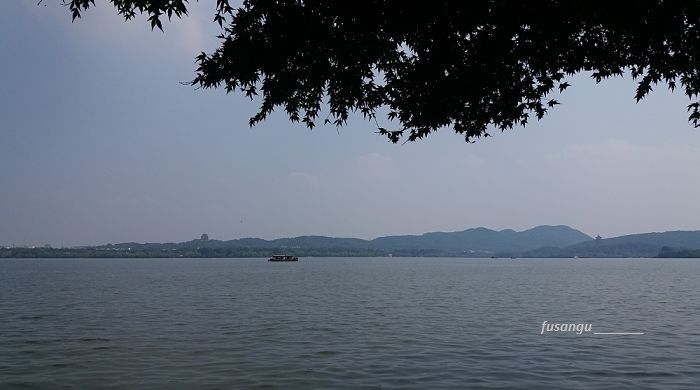
Day 1: West Lake area
The West Lake is one of China’s most important natural and cultural landscapes. Its beauty and harmony have become a paradigm and have been celebrated by countless renowned artists in China and the whole East Asia.
Many cultural and historical sites of outstanding architecture dot the area blending with the natural beauty of the lake. On three sides are hills and mountains. Their background often finds in the delicate shape of a pagoda an element of singularity.
Over many centuries poets and noblemen have identified a great number of poetic scenes. A common tourist path through the area touches upon the so-called Ten West Lake Prospects:
-
Dawn on the Su Causeway in spring: The SuDi is a long causeway that bisects the lake along the north-south direction. It was built under the supervision of Su DongPo, a famous poet of the Song Dynasty Period. Six rock bridges are found along the way. They all have a poetic name. Willow and peach trees create a delicate cover;
-
Winery yard and Lotus Pool in summer: a scenic spot near the north-western corner of the lake, famous for the fragrances and natural beauty;
-
Moon over the peaceful lake in autumn: near the West Outer Lake, the scenic place is marked by the Imperial Stele Pavilion that protrudes into the water body;
-
Lingering snow on the Broken Bridge in winter: at the foot of the Precious Stone Hill, a scenic spot that can be appreciated from the summit of nearby BaoShi Mountain. When covered in snow, due to light reflection and different levels in snow coverage on its span the bridge along Bai Causeway may seem broken;
-
Orioles singing in the willows: at the QingBo Gate, on the site of a large imperial garden. Willows line the dyke and nearby is the Orioles’ House;
-
Viewing fish at the Flower Pond: a large park located south of the Su Causeway comprises five minor scenes. Not to be missed on are the Peony Garden, the Peony Pavilion and the Red Carp Pond. Not far is Villa Jiang;
-
LeiFeng Pagoda in the evening glow: the temple located south of the lake dominates the sunset scene with its elegant shape. Visitors can reach the top of the pagoda and have a commanding view of the lake;
-
Twin Peaks piercing the clouds: two small mountains face each other at the north-western corner of the lake. The scene is most beautiful when their summits emerge from a sea of clouds or a blanket of mist. In ancient times the peaks housed small temples;
-
Evening bell ringing at NanPingShan: the small hill located above JingCi Temple is called NanPingShan. Bells ringing at dawn and drums resonating at sunset made for a spectacular scene;
-
Three pools mirroring the Moon: south of the Lesser Paradise Island, one of the small group of artificial islands built in the middle of the West Lake, are three small stone towers arranged in a triangular layout. Their cave section is lit during full moon, which creates the impression of multiple reflections of the Moon on the surface of the lake.
The area is quite large but you can cover much of it on a full day visit. You should both walk along the perimeter and the causeways that cross the lake. In order to visit the small islands you need to join a tour.
Day 2: LingYin Temple, China National Tea Museum, LongJing Hills
At 7:00 o’ clock, when crowds are not to be feared, you can start your visit to LingYinSi, one of China’s most beautiful and historically significant temples.
LingYinSi (灵隐寺 | Temple of the Soul’s Retreat) was built by the Indian monk HuiLi during the Jin Dynasty Period. The monk was inspired by the spiritual nature of the beautiful valley, sheltered by a thick forest of tall trees and surrounded by mountains on three sides, in a peaceful atmosphere of seclusion.
The temple grew into one of the most influential centres of irradiation of Buddhism in China. At the peak of its development, it comprised tens of buildings and a large monastery providing accommodation to over 3.000 monks.
Despite repeated losses and destruction, it has always been restored and enjoyed support at the highest levels, even during the infamous period of the Cultural Revolution.
Among the highlights not to be missed on are the Laughing Buddha, the central statue of the triad housed in the Hall of Heavenly Kings, the Sakyamuni sitting on a Lotus flower, a huge statue housed in the Hall of the Great Hero, the main hall of the complex, the Hall of the 500 Arhats, a recently added building built in the shape of a swastika at the centre of which stands a magnificent pavilion in bronze.
Nearby is an atmospheric housing vestiges of the past, an exciting environment that testifies of the profound devotion that has always surrounded the temple. Most famous is the Peak Flown From Afar (飞狼风, FeiLangFeng), a small hill whose shape and consistence are in contrast with the surrounding formations and that was deemed to have originated in India. A great number of old statues can be seen in the caves and cliffs that shape the unique environment.
The complex is quite large and walking around is a pleasant experience amid Nature. You can then dine at the vegetarian restaurant located inside the temple (near the entrance).
Not far from LingYinSi are the LongJing Hills. They offer beautiful sights of the Chinese countryside, a landscape that is somewhat at odds with the modern city, a respite for the spirit and a scenery famous for the renowned green tea plantations.
In this area is China National Tea Museum, which probably is the world’s largest and most comprehensive museum entirely devoted to the culture of tea. Housed in two groups of halls, not deprived of architectural value, the exhibitions help the visitor learn about the different tea varieties, the historical development of production and consumption methods and customs, the societal and cultural changes tea brought about, the evolution of tea ceremony in China and neighbouring countries and much more. There is also a very good souvenir shop.
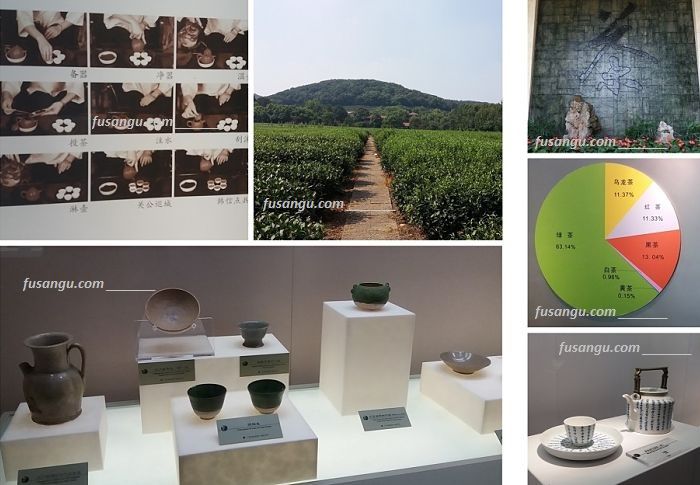
How to get to Hangzhou
Hangzhou is served both by the conventional and the high-speed railway networks. The city can easily be reached by major cities such as Beijing, Shanghai, Xi’An, Wuhan, Guangzhou and Shenzhen.
Train services are very frequent and relatively cheap. High-speed trains offer the most comfortable travel solution. Those who plan to reach Hangzhou from distant regions might want to consider flying or travelling by train during the night.
Hangzhou airport is served by an increasing number of international routes.
Where to stay in Hangzhou
The city centre is the best place to stay at if you want to be close to restaurants, shops and major transportation hubs. A large number of hotels is located along the eastern shore of the West Lake.
Near the eastern shore of the lake, in more secluded places, are some luxury hotels and a few guest-houses and cheap hostels.
At the north-western corner of the lake is the State Guest House. Set in one of the most scenic areas of the city, it has long served as the accommodation for notable foreign guests.
Related articles:
China suggested 2-week itinerary
Nearby destinations:
Suzhou 1-day itinerary | Suzhou 2-day itinerary
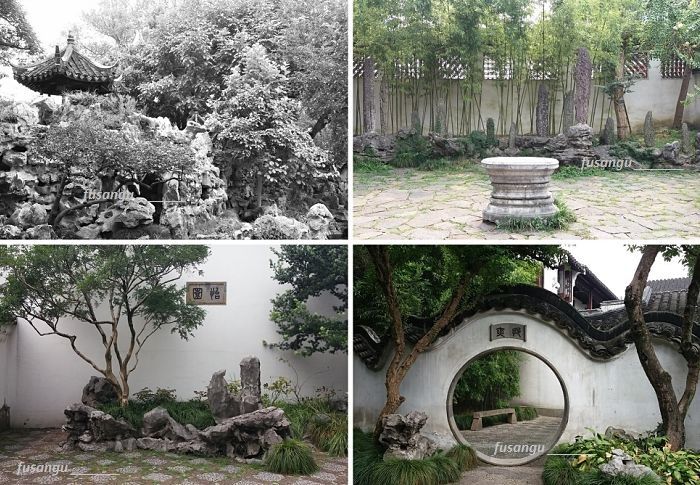
If you are interested in China’s traditional art you should never miss out on a visit to Suzhou, the ancient capital of the Kingdom of Wu and a historical town whose development exerted a huge influence on shaping the national culture of the Middle Kingdom.
For long time the most important and powerful city of the region, Suzhou has become famous for the production of silk and its magnificent gardens.
The Classical Gardens of Suzhou, enlisted as World Heritage, are definitely among the most exquisite and inspiring works of art that one can see.
Classical Gardens of Suzhou
In Suzhou you can find many traditional gardens. Nine of them, named the Classical Garden of Suzhou, are considered masterpieces of the art of the Chinese garden, an exquisite form of art that aims to create an idyllic reality of pure harmony.
Their beauty is intended as a way to illustrate the perfection of the metaphysical principles of the Chinese philosophy. The design resorts to a great number of methods and sophisticated techniques that condense a huge narration within the limits of a very small space. Meticulous details create a ever changing landscape. Even the slightest change in the position of the observer generates a completely different perspective.
A large number of elements, such as plants, flowers, pavilions, rock formation, bridges, calligraphy works, buildings of various nature are combined in wonderful compositions that never cease to amaze and constantly change with the weather and seasonal cycles.
Assuming that you choose to wake up early and begin your visit by 8:00 a.m. we suggest you include in your itinerary the Humble Administrator’s Garden, the Lion Grove Garden, the Master of the Nets’ Garden, the Lingering Garden, the Tiger Hill, a cultural trove.
Humble Administrator’s Garden
The Humble Administrator’s Garden (拙政园, ZhuoZhengYuan) is the largest and most renowned garden in Suzhou. Dating back to the Ming Dynasty Period, it was found by a civil servant who chose to retire from his duties to embrace seclusion and a simple and modest life.
The garden area, centred around a large lake, is divided in three parts (eastern, central and western) and comprises a large number of scenes as well as a museum which occupies the former residence. The number of elements (buildings, bridges, stelae, penjing) in the composition is impressive.
Other destinations
Depending on the pace of your mode of travelling, you may visit two or more gardens and places of scenic and historical importance. Among them we believe we recommend the following:
-
Master of the Nets Garden (网师园, WangShiYuan), the smallest among the Classical Gardens of Suzhou, it dates back to the Southern Song Dynasty Period. It is an excellent place where you can start to learn how to appreciated this form of art. The composition is built around a central pond, surrounded by pavilions and corridors. The observer follows a circular path that opens to a rapidly changing horizons. It is incredible what the meticulous design achieved in such a small area. Next to the central section around the pond, are the residential quarters. Here you can see many halls exquisitely ornate. Not to be missed is also the small courtyard DianChunYi (殿春簃), a real gem. There is a deep sense of harmony between architecture and Nature;
-
Lion Grove Garden (狮子林园, ShiZiLinYuan), dating back to the Yuan Dynasty Period, it was built by the disciples of a Buddhist monk. It quickly became a gathering place for literati and followers of Buddhism as well as a source of inspiration for artists The garden comprises a number of artistic buildings, among which the True Delight Pavilion (真去亭, ZhenQuTing) stands out. At the centre, surrounded by the pond, is a large rockery mostly made of Taihu Their shapes give rise to the most various impressions. Together with the trees, they are meant to recreate a mountainous landscape, a dimension most beloved by Zen practitioners.
-
Lingering Garden (留园, LiuYuan), one of the most renowned gardens of Suzhou, it is also associated to GuQin music. With a history of complicated vicissitudes that led to numerous reconstructions, the garden is most famous for the large rockery formations, the long and meandering covered paths and some of China’s most impressive Scholar stones. Change in perspective is often abrupt and surprising and the visitor feels like he is wandering in a maze. Corridors are a key element of space definition and buildings come in a variety of size, colour and shape. Of particular beauty are the elegant pavilions.
-
Tiger Hill (虎丘, HuQiu), a scenic and historical site, for centuries if not millennia, a coveted destination poets and artists. On the slopes of the beautiful hill amid a lush vegetation are ancient temples, pavilions and gardens. Some of the vestiges date back to the period when Suzhou was founded. The hill emerges from the rather flat surroundings as a singularity and, as it often happens with mountains, it was regarded as a sacred place. Therefore it was here that the King of Wu was buried. Over the centuries its beauty was celebrated by men of culture who gave poetic names to many scenic spots. Poetry and calligraphy works are carved into rocks and cliffs. At the top of the hill stands the imposing seven-storey YunYan Pagoda (云岩寺塔, YunYanSiTa). Despite a consolidation intervention during the Ming Period its brick structure still exhibits a considerable tilt. The tomb of King HeLu lies beneath the Sword Pool (剑池, JianChi). There is also a museum with a collection of penjing.
How to get to Suzhou
After visiting Wuzhen you can reach Suzhou directly by bus or train. The journey takes less than 2 hours.
Where to stay in Suzhou
The city centre is the best place to stay at. Suzhou is one of the few large cities in China where you can pleasantly get around on foot.
Subway lines are present but they do not play much of a role when it comes to travelling for the purpose of tourism. Some tourist bus lines connect many places of interest. Using them is easy and very cheap.
In the city centre you can find a variety of guest houses, hostels and hotels of any kind. Value for money ratio is usually very good and quite a few hotels are housed in traditional houses, which makes for a charming experience.
Related articles:
China suggested 2-week itinerary
Nearby destinations:
Hangzhou 2-day itinerary | Wuzhen 1-day itinerary
Page 2 of 3
